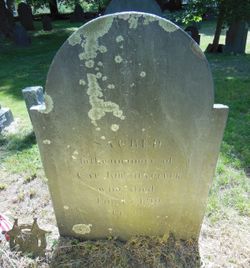Job SHATTUCK
SAR Patriot #:
P-287903
The following information was assembled from numerous sources and cannot be used directly as proof of Qualifying Service or Lineage.
It is considered a research aid and is intended to assist in locating sources that can be used as proof.
State of Service: MA
Qualifying Service: Captain
DAR #: A103088
Birth: 11 Feb 1736 Groton / Middlesex / MA
Death: 13 Jan 1819 Groton / Middlesex / MA
Qualifying Service Description:
- 1st Lt, Capt Sartell's Co, Alarm of Apr 19 1775. 1st Lt, Capt Henry Haskell's Co, Colonel Wm Prescott's 10 Regt; Battle of Bunker Hill. Commissioned as Capt Jan 1776.
- Served thereafter in 7th Co, Colonel John Robinson's Regt; Colonel Jonathan Reed's Regt, Gen Brickett's Brigade.
- Saratoga Campain: 2nd Co, Colonel Jonathan Reed's 6th Mass Regt from 7/16/1776 to close of War
Additional References:
- MA Soldiers and Sailors of the Rev War, Vol 14, pg 24-25; Volume XIV, pg 24-25;
- Green's "Groton in the Revolution," pg 28,40, 65, 77, 84;
- DAR Patriot Index, pg 607
- DAR Lineage Book, Vol 124, pg 274
Spouse: (1) Sarah Hartwell; (2) Elizabeth Lakin Gregg
Children: Noah; Rachel; William; Margaret; Anna; Job Jr; Sarah; Daniel;
Members Who Share This Ancestor
| Date Approved | Society | ACN | SAR Member Info | Lineage via Child | View Application Detail | |
|---|---|---|---|---|---|---|
| 1960-10-12 | NY | Unassigned | Charles Hatch Lownsbery (86315) | |||
| 1971-03-18 | VA | Unassigned | Steward M Pollard (101190) | Job | ||
| 2002-11-21 | CO | 14871 | David Sumner Woods (159442) | Rachel | ||
| 2002-11-21 | CO | 14872 | Andrew Parker Woods (159443) | Rachel | ||
| 2004-12-13 | MA | 21017 | Timothy John Pletkovich (163880) | Noah | ||
| 2017-08-04 | OH | 74250 | Robert Edmund Russell Bowers (195929) | Rachel |
Burial:
Location:
Groton / Middlesex / MA / USA
Find A Grave Cemetery #:
Grave Plot #:
Plot 1
Grave GPS Coordinates:
Find A Grave Memorial #:
Marker Type:
Headstone
SAR Grave Dedication Date:
Comments:
- Patriot contemporary stone, upright, partially legible
- Images 1 & 2, provided with permission from Jack Parker, Find-a-Grave member #47734878
Directions to Cemetery / Gravesite:
Additional Information:
Find-a-Grave memorial (https://www.findagrave.com/memorial/84767276/job-shattuck) two photos of the headstone. There are links to Find-a-Grave memorials for the patriot's parents, wife (Sarah Hartwell), and children

